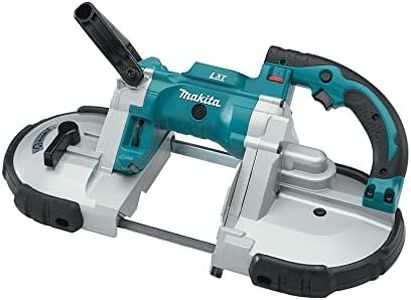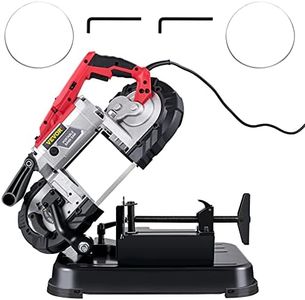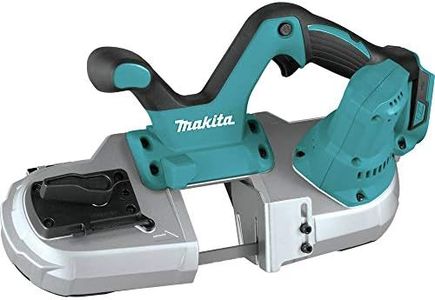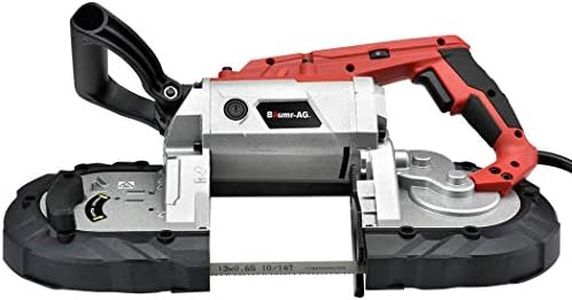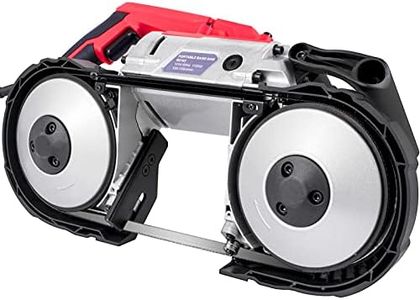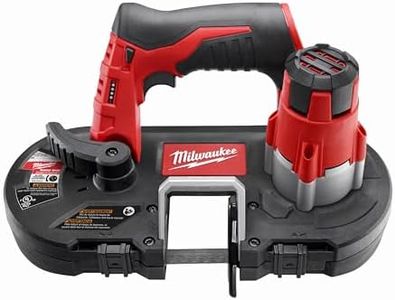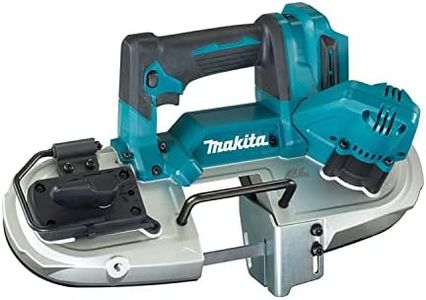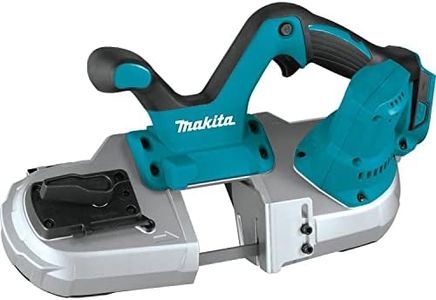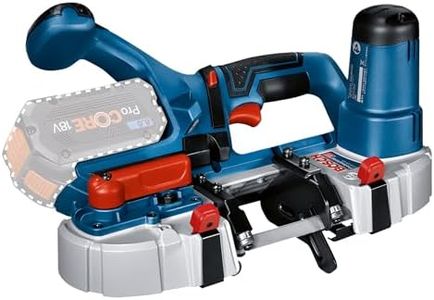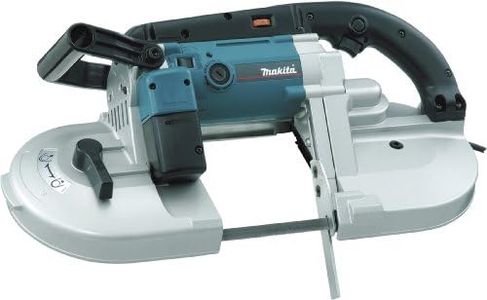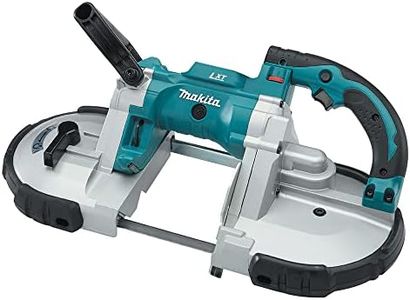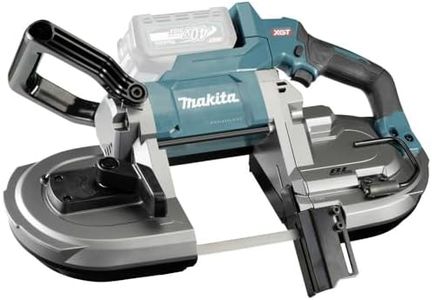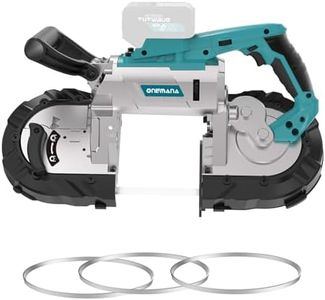We Use CookiesWe use cookies to enhance the security, performance,
functionality and for analytical and promotional activities. By continuing to browse this site you
are agreeing to our privacy policy
10 Best Portable Band Saw
From leading brands and best sellers available on the web.By clicking on a link to a third party's website, log data is shared with that third party.
Buying Guide for the Best Portable Band Saw
Choosing the right portable band saw can make a big difference in how efficiently and safely you can cut materials like metal or wood on the go. Before buying, think about what you'll be cutting, where you'll be working, and how often you'll use the tool. Focus on the main features that affect performance, comfort, and suitability for your tasks.Blade Size and CapacityBlade size and cutting capacity determine the maximum size and thickness of material you can cut. A larger blade or greater throat depth means you can cut through bigger pieces, while a smaller one is usually more compact and lighter. If you mostly cut small pipes or rods, a smaller capacity is fine. For larger workpieces, look for a greater cutting capacity.
Power Source (Corded vs. Cordless)Portable band saws come in corded (plugged into an outlet) and cordless (battery-powered) models. Corded saws generally offer more consistent power and are better for long or heavy-duty jobs, but tie you to an outlet. Cordless models give you flexibility to work anywhere, but batteries limit runtime. If you need mobility or work away from outlets, choose cordless. For longer, intensive sessions, a corded saw may be better.
Motor Power (Amperage or Voltage)Motor power, measured in amps for corded models and volts for cordless ones, influences how easily the saw can cut through tough materials. Higher power means smoother, faster cutting, especially on thick or dense stock. For light use on thin materials, lower power is enough. For frequent or heavy-duty use, consider higher motor power.
Cutting Speed (Variable Speed Control)Cutting speed is how fast the blade moves, usually measured in feet per minute (FPM). Some band saws offer variable speed controls, letting you adjust the speed for different materials. Slower speeds are better for harder metals, while higher speeds work well for softer metals or wood. If you cut a mix of materials, variable speed is very useful. For one main material, a fixed speed set for that type is okay.
Weight and PortabilityWeight affects how easily you can carry and use the band saw, especially on ladders or in awkward places. Lighter models are easier to handle and reduce fatigue over time, but may offer less cutting capacity or power. Think about your own strength, your work environment, and how often you’ll move the tool around when deciding how much weight you can handle comfortably.
Blade Changing SystemChanging the blade should be quick and simple to keep your work moving. Some band saws have tool-free blade changing systems, making the process effortless, while others require wrenches or other tools. If you expect to change blades often or need to switch between different types of cuts, a tool-free system adds convenience.
Durability and Housing MaterialSince portable band saws are often used on job sites, the durability of the saw is crucial. Models with strong casing, usually made from metal or reinforced plastics, stand up better to drops and harsh conditions. If you expect the tool to see heavy use or rough handling, focus on durability and quality of construction.
Ergonomics and ComfortA comfortable handle and good grip reduce strain, especially during longer jobs. Ergonomic features like rubberized grips, balanced design, and accessible controls make a big difference. If you plan to use your band saw for extended periods, prioritize comfort and user-friendly designs.
